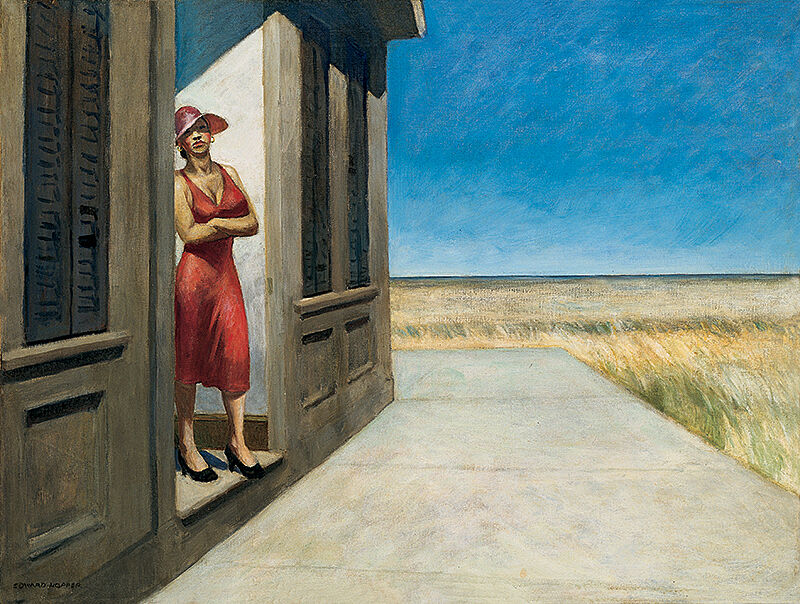Sleuth the Scene
Write a story about these scenes
In 1929, Edward Hopper and his wife Josephine traveled to Charleston, South Carolina. In the countryside surrounding Charleston, Hopper encountered a woman standing in front of her cabin. Amost a quarter of a century later, Hopper painted the scene, perhaps from sketches, or from his memory and imagination.
In the early 1970s, William Eggleston began to take road trips with curator Walter Hopps, leaving from Memphis, Tennessee and venturing as far as the Pacific Coast. While in Huntsville, Alabama, Eggleston photographed a man in what appears to be a hotel room. Each artist created a specific mood in this pair of works depicting scenes from the American South. With your students, view and compare Edward Hopper’s painting South Carolina Morning (1955) with William Eggleston’s photograph Huntsville, Alabama (1971).
a. Ask students to spend some time looking at the figures in these two works. Study the poses, facial expressions, and body language of the man and woman. How would students describe the figures? Why?
b. Compare the setting and composition of each work. What are the similarities and differences? Encourage students to consider color, light, space, perspective, and point of view. Discuss the mood of each work. What details contribute to the mood? If students were to assign a genre to the story implied in each work, which genre would they assign? Why?
c. What do students think just happened in each of these scenes? What might happen next? Ask students to choose one of the characters in these works and write a story about the scene. Encourage students to incorporate details of what they see as well as using their imagination to compose their narrative. Share and discuss students’ stories with the class. What narratives did they create based on their own observation and imagination?

